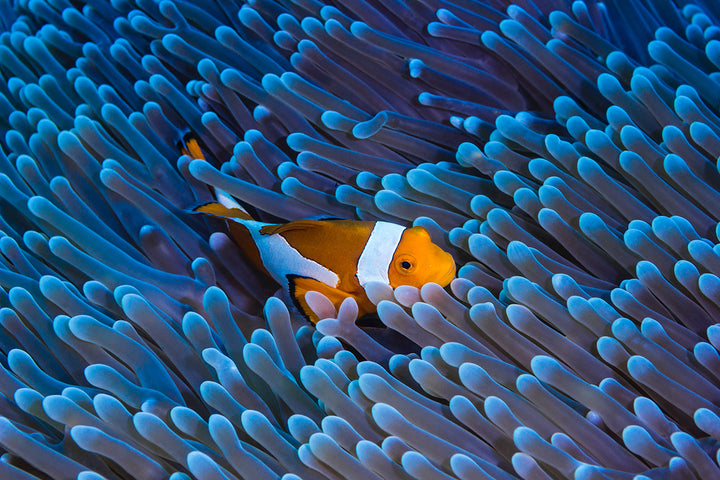- Prepare your coral holding system for acclimation.
- Float the bags containing your new animals in your coral system. If you are floating a few bags make sure that you drain some water from the system to prevent overflowing when the bags are introduced. You can keep the drained water in a bucket/s so that it can be used to refill the system once the acclimation is complete. DO NOT CUT THE BAGS OPEN YET. Float the bags for at least 10-15 minutes. If your bags feel excessively warm or cold when you receive them float them for up to 30 minutes or until the bag temperatures feel close to your system temperature
- Cut the bags open below the metal clips. Do not allow the water inside the bag to escape into your system.
- Place the corals/clams in acclimation tubs. Make sure the water level in the tubs is at about ¼ full.
- If using the plastic shipping bags (not recommended), leave them floating in the water making sure that the shipping water does not mix with the system water.
5) DO NOT ADD AMMONIA REDUCING CHEMICALS UNLESS THE MANUFACTURER SPECIFICALLY INDICATES THAT IT IS SAFE FOR USE WITH CORALS AND CLAMS.
6) a. If using tubs, start a SLOW drip of your coral holding system water. SLOWER IS BETTER!
- If using the shipping bags add about a cup of system water to each bag.
- As soon as the tubs are almost full, pour out the water to waste so that the tubs are 1/2 full again.
- For bags, repeat step #6.b. every 5 minutes until the bags are full. Do not allow the water inside the bags to escape into your system. When the bags are full, empty half the contents of each bag to waste.
- Allow the tubs to fill again with drip water.
- Add about 1 cup of your system water to each bag every five minutes until the bags are full again.
- At this point the pH, specific gravity, and temperature in the tubs/bags should match that of your system. The ammonia should also be minimal or zero.
- Carefully remove the coral or clam from the tubs/bags making sure not to let the bag water escape into your coral system. You may need to empty some of the bag water before you reach into each bag to remove the animals. Be extremely careful when handling live corals not to touch the delicate flesh of the animals. TRY to handle the corals only by their hard skeletons whenever possible.
- Place your new clams or corals in safe places in your system. You should not place newly introduced specimens too close to other well established aggressive species as they will sting their new “competitors”. Check on compatibility issues to see where your new clam or coral should be placed in its new home. Remember that many aggressive coral species extend their “sweeper” tentacles mainly at night, so what may seem to be a peaceful environment during the day and right after acclimation may not be once the lights are turned off.
- Discard the shipping bags and any water left in them.
- Replenish the water you removed from your system before you floated the bags.
Helpful Tips
- Always try to acclimate all new specimens even if they appear to be dead. This is especially true for fish which can appear to be dead under conditions of depressed pH. Often these animals will “revive” as the pH is increased during acclimation.
- Always turn off your aquarium lighting and dim the room lights before, during, and after acclimation. While this is not that important for corals it is highly recommended for most animals.
- Never expose sponges and gorgonians (sea fans) to open air. This is the only case where you will have to introduce some of the bag water into your aquarium. KEEP THESE SPECIES UNDER WATER AT ALL TIMES.
- Do not be too anxious to admire your new arrivals. Allow them to adjust to their new environment before you expose them to bright lights and activity.

